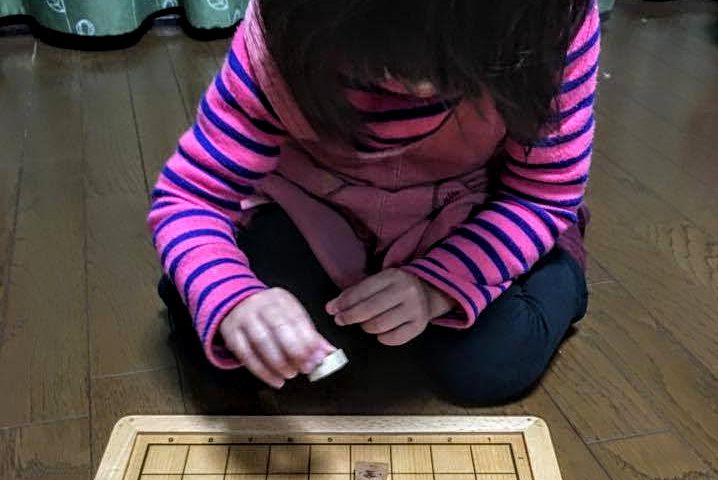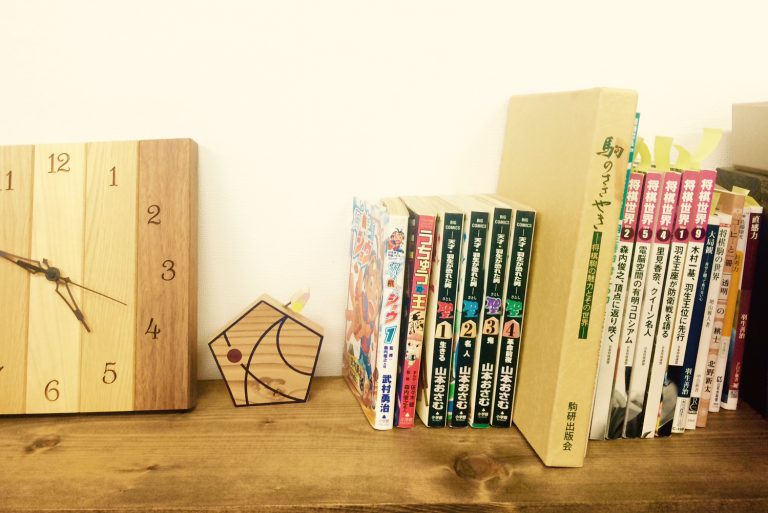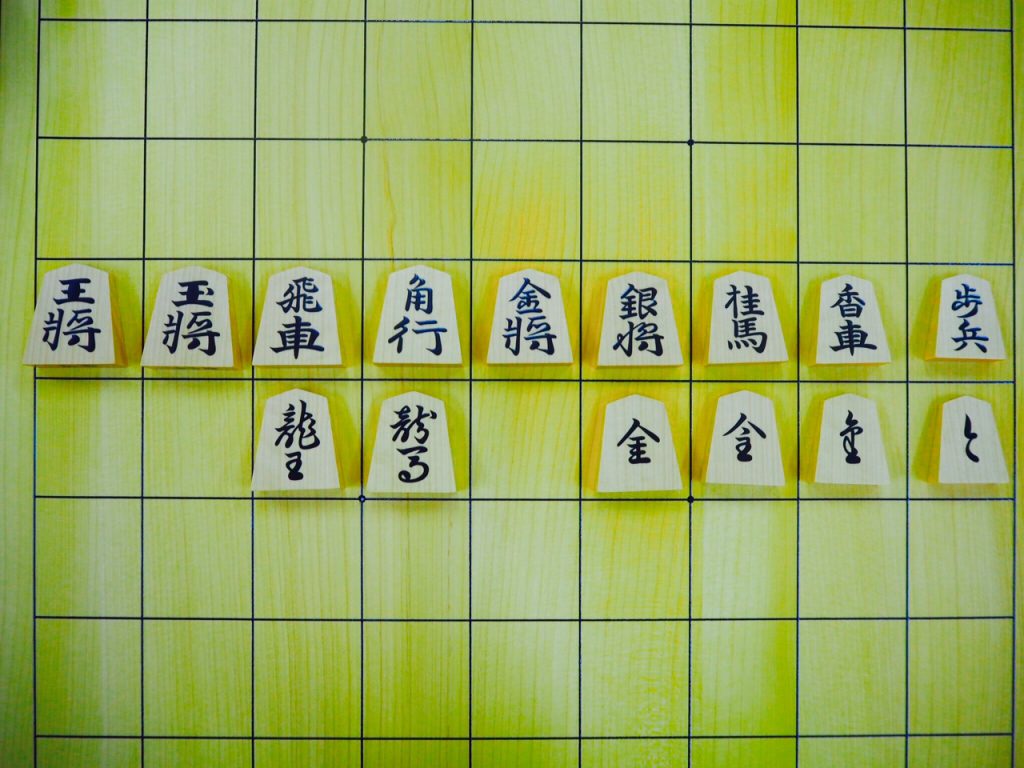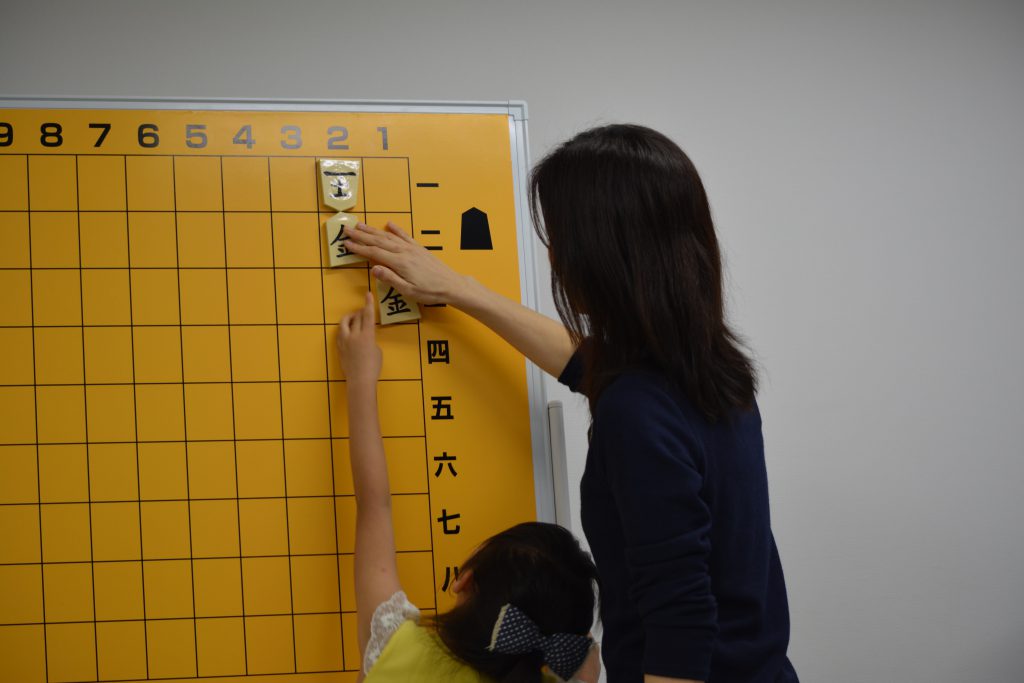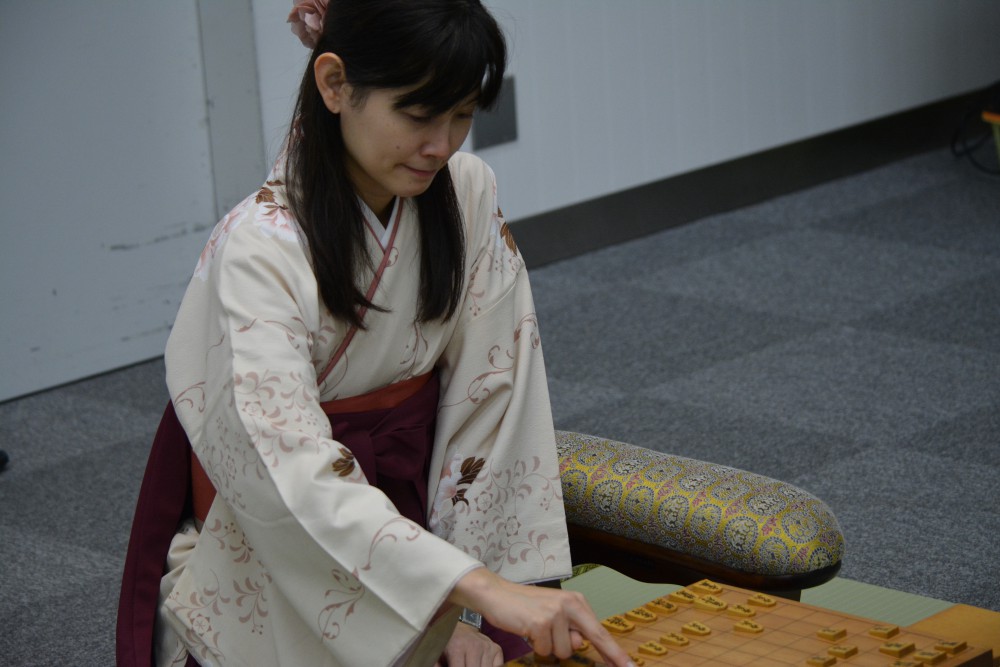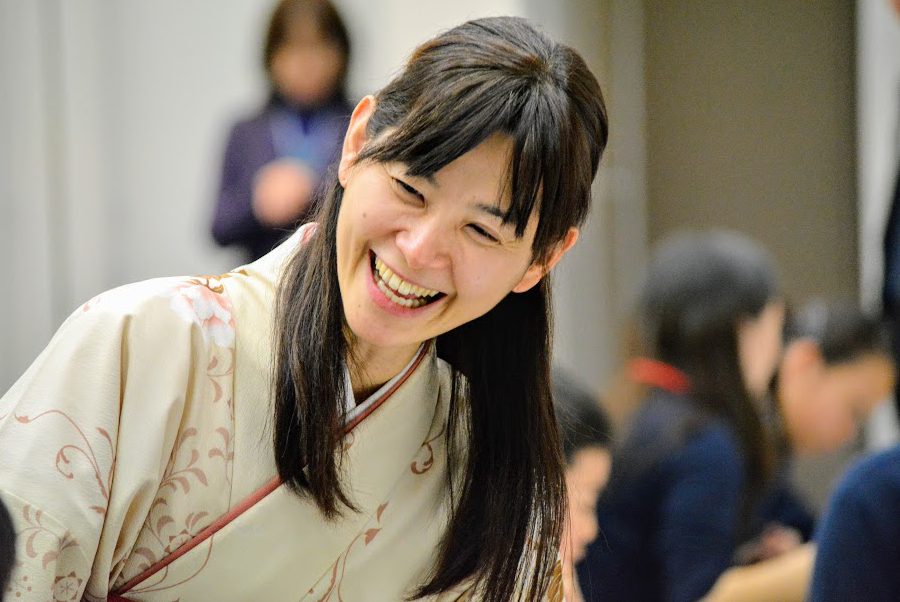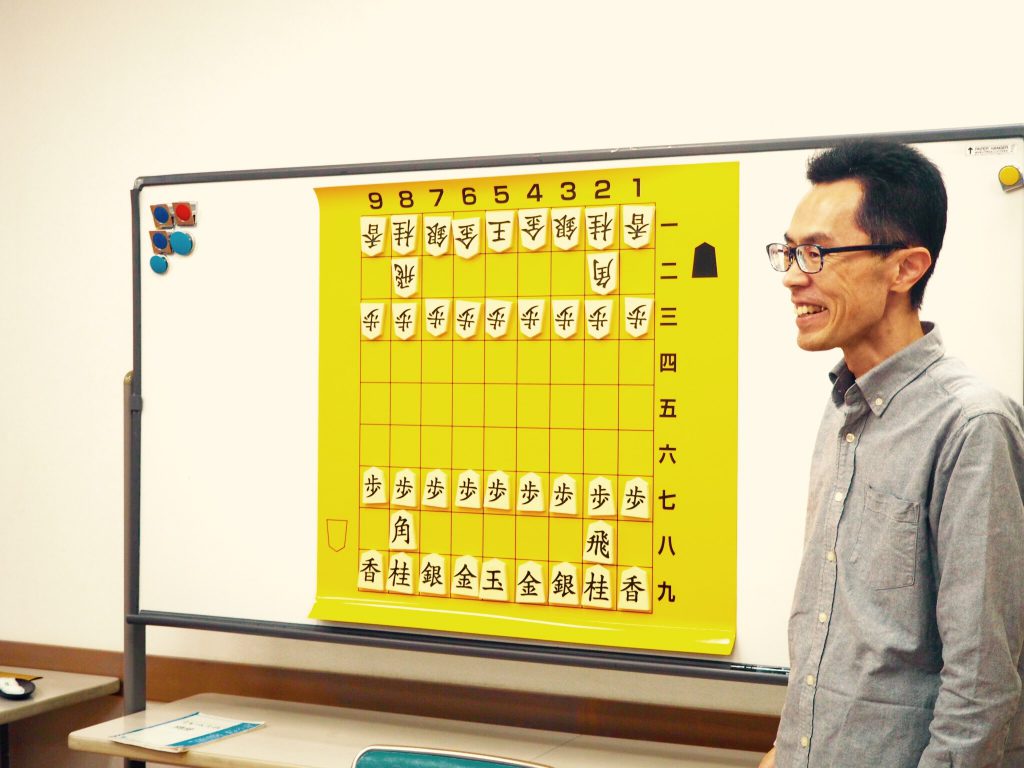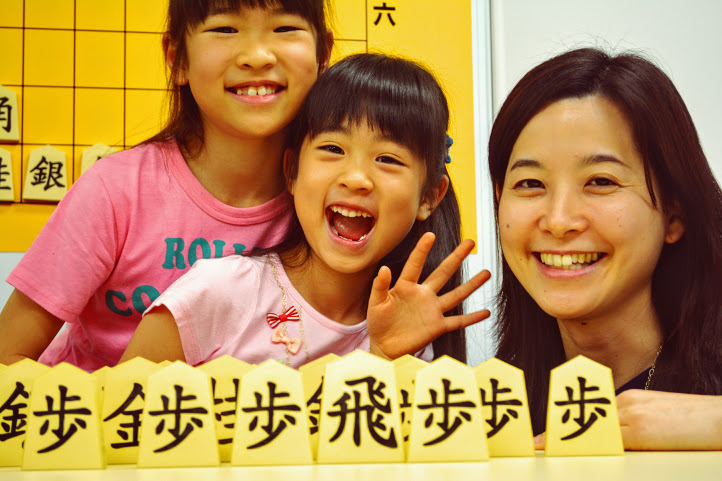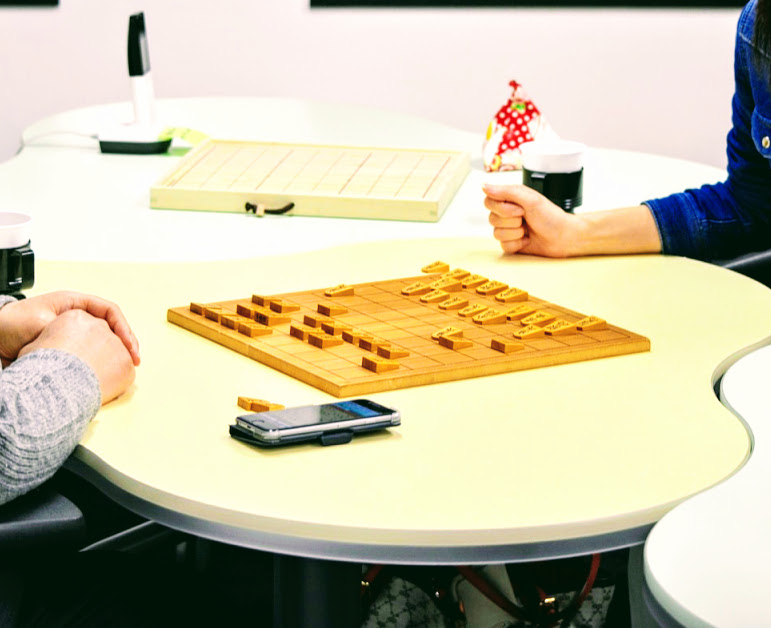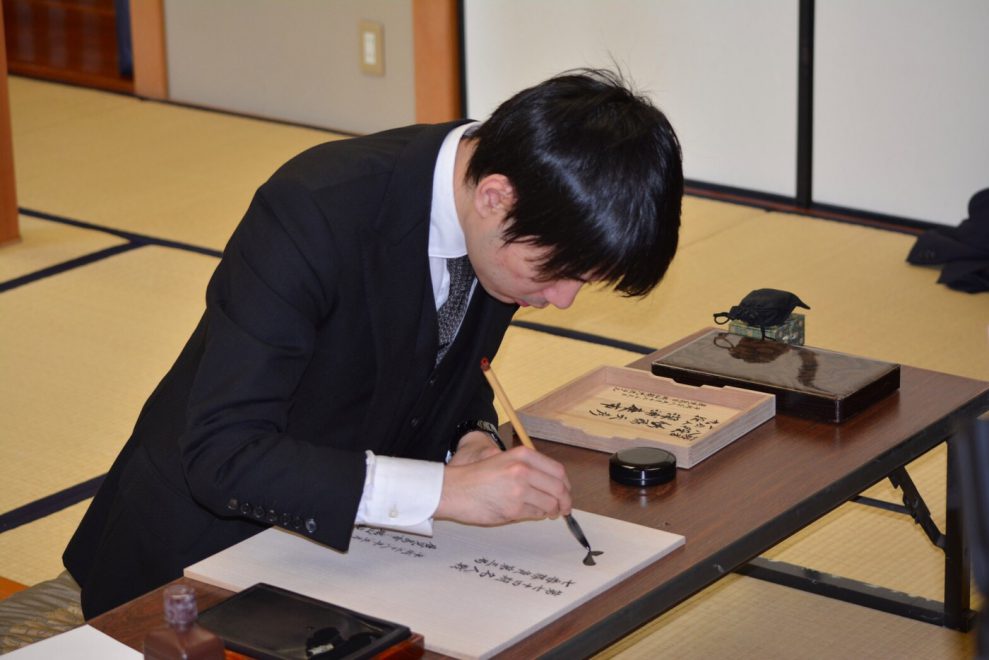I-tsu-tsu Blog
Shogi
-
Five Reasons to Recommend Shogi to Girls
We hold “I-tsu-tsu Kids Shogi Lesson 101 for Parents and Children,” a series of six lessons, at Senkawa Culture Centre in Chofu City, Tokyo from February 3. To my surprise, out of eight participants, six of them are girls. When I was a child, I was surrounded by boys and men in Shogi classes and practice halls. My sister was the only girl besides me, and I felt a little lonely. So, I am very happy to see that more girls show interest in Shogi now. So, I would like to talk about five reasons to recommend Shogi to girls on today’s article to encourage more and more girls to
Akiko Nakakura 8 March 2017
-
Five Good Reasons for “Koma ochi”
“Koma ochi” in Shogi is what you call a handicap. A superior player drops several pieces out of the total 20 pieces and plays a game with fewer pieces. In the world of Shogi, a stronger player who drops pieces is called “Uwate (Handicap giver),” and a subordinate player is called “Shitate (Handicap taker).” If we go to a Shogi practice hall, an instructor or someone in charge decides which player drops which pieces after checking players’ skills. As a matter of fact, however, not a few people dislike “Koma chi.” Nevertheless, “Koma ochi” is primarily an inevitable practice method for both Uwate and Shitate players to improve Shogi skills.
Akiko Nakakura 5 March 2017
-
Five Challenges That Young Children May Face and How to Overcome Them
There are many activities available for children such as baseball, soccer, smart-phone games and so forth. Among these activities, not a few parents hope that their children play Shogi because they consider that Shogi cultivates children’s thinking skills and helps children to learn manners and courtesy. If your children have already reached school-age, I think there are sufficient chances for them to learn and enjoy Shogi. Some friends may play Shogi or a school teacher may be able to teach how to play Shogi to your children. However, if your children are below school-age, there is a different story. First of all, it is doubtful if young children show interest
Akiko Nakakura 3 March 2017
-
Shogi Rules – How to Play Shogi – : Step 2-3 Promotion
Explore Art of Shogi A professional Shogi player invites you to the world of Shogi along with traditional Japanese culture The previous step Today, we will learn how Shogi pieces become stronger after its transformation. Pokemon and Power Rangers also transform themselves to be stronger. Many heroes and heroins transform themselves to be more powerful. There are nine ranks (rows) on a Shogi board. The upper three ranks are your opponent’s camp and the bottom three are yours. When your piece enters the opponent’s camp, the piece can be turned over to transform. This turning over is called “promotion.” Once a piece is promoted, it becomes stronger getting different moves
Akiko Nakakura 30 January 2017
-
Shogi Rules: – How to Play Shogi – : Step 2-2 Moves of Hi/Hisha (Rook) and Kaku (Bishop)
Explore art of Shogi. A professional Shogi player invites you to the world of Shogi along with traditional Japanese culture. “Shogi Rules: – How to Play Shogi – “ is now available on the blog of I-tsu-tsu Co., Ltd. Even a novice player will be able to play a standard Shogi. There are three steps and one step has approximately 10-15 lessons. You will be able to play Mini Shogi and learn how to play standard Shogi with 9 x 9 squares and 40 pieces in Step 2. It is full of fun! The previous step Step 2-2 Moves of Hi/Hisha (Rook) and Kaku (Bishop) Today’s pieces are Hi/Hisha (Rook) and Kaku (Bishop). They are
Akiko Nakakura 30 January 2017
-
Shogi Rules: – How to Play Shogi – : Step 2-1 Moves of Kei/Keima (Knight) and Kyo/Kyosha (Lance)
Explore art of Shogi. A professional Shogi player invites you to the world of Shogi along with traditional Japanese culture. “Shogi Rules: – How to Play Shogi – “ is now available on the blog of I-tsu-tsu Co., Ltd. Even a novice player will be able to play a standard Shogi. There are three steps and one step has approximately 10-15 lessons. You will be able to play Mini Shogi and learn how to play standard Shogi with 9 x 9 squares. It is full of fun! The previous step Step 2-1 Moves of Kei/Keima (Knight) and Kyo/Kyosha (Lance) Let’s start Step 2 from today. Two more new pieces are introduced in
Akiko Nakakura 30 January 2017
-
Why Professional Shogi Players wear Kimono for Formal Occasions
“Sunday best clothes” is what we wear for important occasions. In the world of Shogi, similarly, there are matches where players dress differently. As you may already know, players wear Kimono for title matches. There is no official rule that players should wear Kimono for title matches. Nevertheless, most players, both males and females dress in Kimono by tacit consent for title matches. For your information, though Igo is also traditional Japanese culture, most Igo players wear suits for title matches, and ones in Kimono are minorities. Surely, male players look even more dignified and ladies appear to be far more gorgeous in Kimono. Wearing something special is a sign
Nae Kanamoto 30 January 2017
-
“I’m glad to have Shogi!” – Five Stories –
I asked five people of different professions to tell about what the good things to have Shogi in their lives. Today’s article is a kind of a collection of five “testimonies” to proof the benefits of Shogi. You will find a lot of good things in playing Shogi among their stories. 1. “You are never too old to play Shogi”: Natsume-san, a satellite Shogi-reporter. There are many good things about playing Shogi, but first of all, I have to go with the fact that we can enjoy Shogi at any age. I went to a Shogi practice hall when I was a student. There were all age groups to enjoy
Nae Kanamoto 30 January 2017
-
Five things that I, Akiko Nakakura bears in my mind when teaching Shogi to girls
Don’t you think that Shogi is for boys? Surely, many famous Shogi players such as Habu-san are males, and Shogi sounds cultured but not really gorgeous. However, girls start to show interest in Shogi gradually as comic books like “3-gates no raion (March comes in like a lion)” trigger their interests. I really sense that since quite a few girls attend our Shogi events. Nevertheless, boys are still the absolute majority in Shogi lessons and classes. Although girls are interested in Shogi, I am sure that they feel anxious entering boy dominant Shogi lessons. So, today, I would like to share things I keep in my mind when I teach
Akiko Nakakura 26 January 2017
-
An Interview with the President of Japan Chu Shogi (mid-sized Shogi) Association
We posted an article on Minase pieces the other day. Minase pieces were originally created for Chu Shogi (mid-sized Shogi), a Shogi variant, not for standard Shogi which is mostly played in the present time. Chu Shogi was born in the era of Muromachi, and noble people mainly enjoyed it in the era of Edo. Compered to the current standard Shogi, Chu Shogi has more squares on its board and more pieces. Also, the rule of reusable pieces (the drop rule) is not applicable. These are notable features of Chu Shogi. Today, we, I-tsu-tsu would like to introduce a standard Shogi lesson for children and also Chu Shogi lesson concurrently
Nae Kanamoto 24 January 2017
-
Enjoy a Lively Conversation with Your Children and Shogi
Playing catch has been classic for a father and children (boys in particular). This could be the case, even though there might be a little difference between the past and present. A parent and a child enjoy a game, throwing a ball back and forth to each other. Actions are quite simple and repeated and mostly after a game they seem to be refreshed. Probably, I got this image too strongly from a scene in a TV drama. I have noticed recently that playing catch has many things in common with Shogi. I would like to argue why I think so! The first, Shogi and playing catch are both played
Nae Kanamoto 24 January 2017
-
Behind the Scenes on the Previous Day of the Meijin Title Match
One Chinese character represents thoughts of the top of the Shogi world “Heart” and “Road” Yoshiharu Habu, Meijin, and Amahiko Sato, the 8th Dan (A kind of ranks given to relatively high-ranked players). These two players who fought on the third Kyoku of the 74th Shogi Meijin Title Match respectively wrote one Chinese character on the wooden board (below in the picture). On the previous day of title matches such as the Meijin Title Match, Shogi players personally wrote their favorite word on the Shogi board, pieces or other tools with a calligraphy brush. This activity is called “Kigou (traditional brush calligraphy written by a professional player).” In some cases,
Akiko Nakakura 24 January 2017
If there is anything we can help you with,or you have any questions,
please do not hesitate to contact us.
